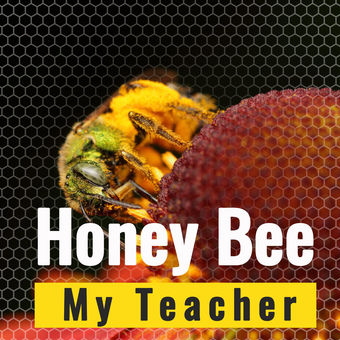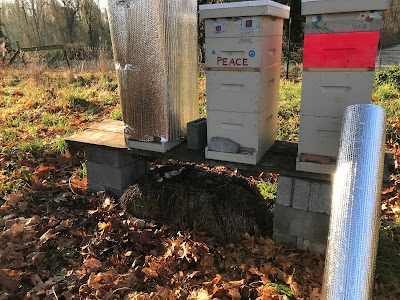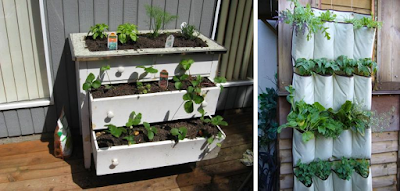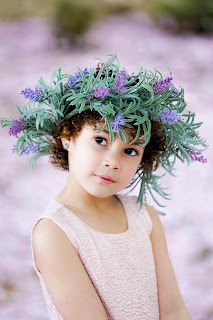Beekeeping in an honest light is the realization that you never have the same situation with every hive. If you try a cookie cutter approach to beekeeping, you will certainly will be schooled by your honeybees.
One thing I have learned is nothing is constant other than the fact that the hive is unpredictable. Anything else is an educated guess. Attention, quality management, and care is always required to keep your colony or colonies successful.
In the Pacific northwest, we are in a dearth. Depending on where we live, we still have a few plants blooming; but sugar syrup has become a supplement to our honeybees, so we aren't harvesting honey. We are helping the bees build up their honey stores to overwinter.
I have treated for Varroa mites this year and no bears! I call that a win so I am focusing on the next stage of bee care, and will be planning now for next Spring. It's the only way to really be prepared for a more successful year.
July is when I treated for Varroa mites using Mite away Quick Strips. This is the general practice. You remove your honey supers and treat. Once treated you place your supers back on the hive, and check for hive beetles. I was fortunate and did not have any. My colonies were complete with the exception of one unhealthy queen. This resulted in combining with another hive. I am content with three strong hives, and will split them next year.
Water is huge right now. I live on a river and a slough, so my bees have unlimited access to water. However that is not always the case. It's very hot and dry right now here in the PNW. Be sure to make sure your bees have plenty of water. Never let them go without.
Don't over inspect. You can experience robbing if you over inspect your hives. Once every 14 days is sufficient. You're simply monitoring your colonies making sure you have no pests or parasites, and they are disease free. This combined with making sure they have plenty of water and food.
September is a few days away. Once the weather turns cold, make sure to feed 2:1 sugar syrup for winter stores.
Know what region you are in (see the chart below). I am in Region 7, which is the Western United States. Our focus in July was generally doing splits, Mite checks, Supers on for honey flow, spot checking mite loads, feed, medication when necessary, and putting the bees in a location where ample food is available.
I purchased my bees in late June this year so I already had a location ready. What I did not account for was drift, so I am re-configuring how my colonies will be set next year. Once wrapped for Winter, I will move them so they will get reoriented in the Spring (once the temperatures reach 50 degrees or higher).
Each region is very different so know your region so you can offer your colonies the best chance for a successful season. I am happy to email you a list for your specific region. Refer to the map in order to email me with your request at
[email protected] and I will get the information to you. We can never be too prepared.

Take your free time and plan for winter and next spring. Ask the questions:
- What should I plant?
- How can I educate others to protect and embrace pollinators?
- Where can I go to connect with others to be informed and inform others?
I learned there are Nectar Flow gaps throughout the season by Region. Thus I found out what I need to plant for mine. Region 7, where I live has occasional gaps starting in March and ending in September. This tells me I need to invest more into trees. They offer the nectar flow needed to keep the colonies thriving while they wait for flowering plants to bloom.
There is more to learn, for me and for you! It's never ending. Although thoroughly enjoyable and a form of mental health, the education never stops. Literature, clubs, mentors, meetings, seminars and legislative issues are all a part of beekeeping. I doubt we will ever know more than the bees, but don't let that stop you from learning their secrets by any means. WE need them too much not to try!



 WATCH:
WATCH: Everyone Has Space for Bee Activities
Sweet Alyssum - Lobularia Maritima - Easy Small Flower
Calendula - Calendula Officinalis - Single Petal, Butterflies Love this Flower
Borage - Borago Officinalis - Easy Medium Flower
Four O Clocks - Mirabilis Jalapa - Large Flower
Hyssop - Agastache Rupestris - Lovely foliage with a Sweet Smell
Cardinal Vine - Ipomoea x Multifida - Easy Starting Climbing Plant
Everyone Has Space for Bee Activities
Sweet Alyssum - Lobularia Maritima - Easy Small Flower
Calendula - Calendula Officinalis - Single Petal, Butterflies Love this Flower
Borage - Borago Officinalis - Easy Medium Flower
Four O Clocks - Mirabilis Jalapa - Large Flower
Hyssop - Agastache Rupestris - Lovely foliage with a Sweet Smell
Cardinal Vine - Ipomoea x Multifida - Easy Starting Climbing Plant
 Photo by Taiana Martinez (Tai's Captures)
Photo by Taiana Martinez (Tai's Captures)